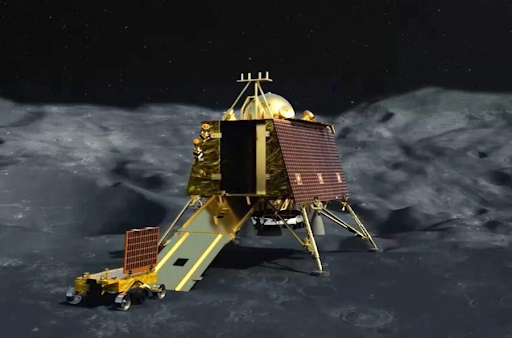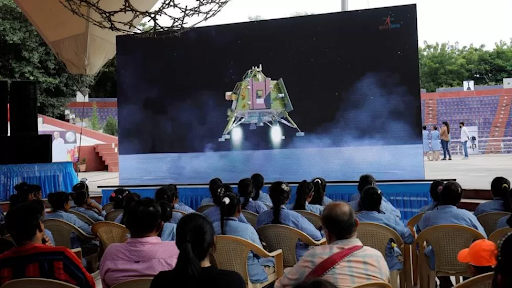
In a momentous achievement, India has marked its place in history as the first country to successfully land a spacecraft in the lunar south pole region. This remarkable milestone places India in an exclusive league of nations that have accomplished soft landings on the Moon, following the footsteps of the United States, the former Soviet Union, and China. The Vikram lander, a component of the Chandrayaan-3 mission, touched down precisely as planned at 18:04 local time (12:34 GMT), sparking nationwide celebrations.
The triumph was celebrated by none other than Prime Minister Narendra Modi, who lauded the accomplishment by stating, “India is now on the Moon.” He expressed his jubilation, emphasizing the significance of the achievement. Prime Minister Modi, who was watching the event unfold live from the Brics summit in South Africa, added, “We have reached where no other country could. It’s a joyous occasion.”

The Indian Space Research Organisation (ISRO) has achieved this remarkable feat through the collaborative efforts of generations of scientists, as noted by ISRO chief Sreedhara Panicker Somanath. This successful landing serves as a testament to the dedication and innovation of ISRO’s scientists.
India’s success in the lunar south pole region comes in the wake of Russia’s Luna-25 spacecraft encountering failure and crashing into the Moon. This incident spotlighted the challenges of landing in this challenging terrain, characterized by its uneven surface, craters, and boulders. India’s prior attempt to soft-land in this region with its second lunar mission in 2019 ended in disappointment, as the lander and rover were lost, though the orbiter survived.

The landing process was a tense endeavor as the Vikram lander, named after ISRO founder Vikram Sarabhai, executed its cautious descent, carrying the Pragyaan rover. The descent involved gradually decreasing the lander’s speed from 1.68 kilometers per second to nearly zero, enabling a delicate landing on the lunar surface. Following this successful touchdown, the six-wheeled rover will soon emerge from the lander to explore the Moon’s surface, collecting invaluable data and images to transmit back to Earth.
The Chandrayaan-3 mission carries significant scientific objectives, including the hunt for water-based ice, a resource that could potentially support future human habitation on the Moon. Additionally, the ice could serve as propellant for spacecraft destined for Mars and beyond. The mission’s scientific instruments will analyze the Moon’s surface characteristics, atmospheric conditions, and tectonic activities to uncover its hidden secrets.

Chandrayaan-3 is an evolution of India’s lunar exploration efforts, building upon the successes of previous missions. Chandrayaan-1, launched in 2008, made a groundbreaking discovery of water molecules on the lunar surface and confirmed the Moon’s daytime atmosphere. Despite the soft landing setback of Chandrayaan-2, its orbiter remains operational, aiding the Vikram lander in transmitting vital data and images to Earth.
India’s accomplishment aligns with the global surge in lunar exploration interest, as several other countries are gearing up for their lunar missions. The Moon, often viewed as a gateway to deep space exploration, continues to captivate scientists and space enthusiasts alike. With the Chandrayaan-3 mission, India embarks on a journey of scientific exploration that promises to unravel the Moon’s mysteries and contribute to humanity’s understanding of our celestial neighbor.





